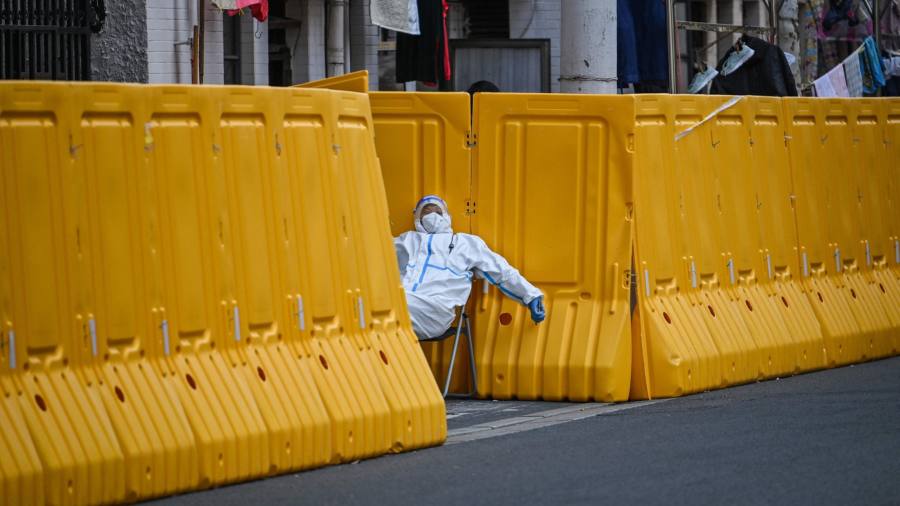The selloff in US bank shares is threatening to push them below a technical threshold that could signal more pain ahead for the broader stock market.
With the collapse of First Republic Bank worsening fears about the solvency of regional lenders, investors have pummeled financial stocks, leaving the S&P 500 financials index on the verge of falling back below its 2007 peak. For perspective, after the 2008 credit crash it took over a decade for that gauge to recover the ground it lost.
The financials index has been above the 2007 high since January 2021. If were to fall through that barrier now, it would be an ominous signal for the broader stock market, said hedge-fund manager Jim Roppel, founder of Roppel Capital Management.
Why? Because it could put further pressure on banks to conserve capital and cut back on lending, adding a drag to an economy already at risk of a recession after the Federal Reserve’s steep interest-rate increases over the past 14 months.
“You can’t have a bull market if bank stocks are falling,” said Roppel, who’s a long-term bull but currently is mostly in cash with the rest in defensive plays like gold and gold miners. “It’s like if an Olympic athlete had cinder blocks around their legs.”
Wild Week
Concerns about the stability of the banking system contributed to a tempestuous week as investors aggressively bet against the stocks. While the share prices rebounded on Friday amid speculation the selling was overdone, many remained down steeply, with Western Alliance Bancorp sinking 27% last week and PacWest Bancorp plunging 43%.
Individual investors — who were some of the market’s most reliable dip buyers in 2020 and 2021 — scooped up some bank stocks amid the rout. In the week through Wednesday, they were net buyers in shares of Bank of America Corp., Truist Financial Corp. and SoFi Technologies Inc., data compiled by JPMorgan Chase & Co.’s Peng Cheng show.
But there’s continuing concern on Wall Street that the ongoing turmoil among regional banks could fuel a tightening in lending. In fact, traders are betting that the toll could be so great that they stepped up wagers that the Fed — which just signaled that Wednesday’s rate hike may be its last — will start easing monetary policy as soon as July to stimulate the economy.
Even so, Nancy Tengler, chief investment officer of Laffer Tengler Investments, said it’s too soon to wade back into shares of beaten up banks. Instead, she’s been focused on technology and consumer-related stocks that would benefit from a drop in interest rates, though her firm added shares PNC Financial Services Group Inc. after it delivered strong profit growth and growing deposits.
“It’s not smart to chase some of these other bank stocks,” Tengler said. “You have to let the falling knife fall.”
Friday’s stock-market rebound was fueled by the stronger-than-expected monthly jobs report for April, which tempered fears of a recession. Still, while the 1.9% rally in the S&P wiped out most of last week’s decline in the broad benchmark, the financial stocks in the index lost 2.7% over the five sessions.
Scott Colyer, chief executive at Advisors Asset Management, said the S&P 500 would have to slump to 3,600 or lower for him to become more optimistic about stocks, as valuations remain pricey. It closed at about 4,136 Friday.
“We have to see have financials leading the way for the stock market to be in a sustainable uptrend — but that’s not what’s happening,” Colyer cautioned. “Don’t pick up nickels and dimes in front of a steam roller.”
Credit: Source link











